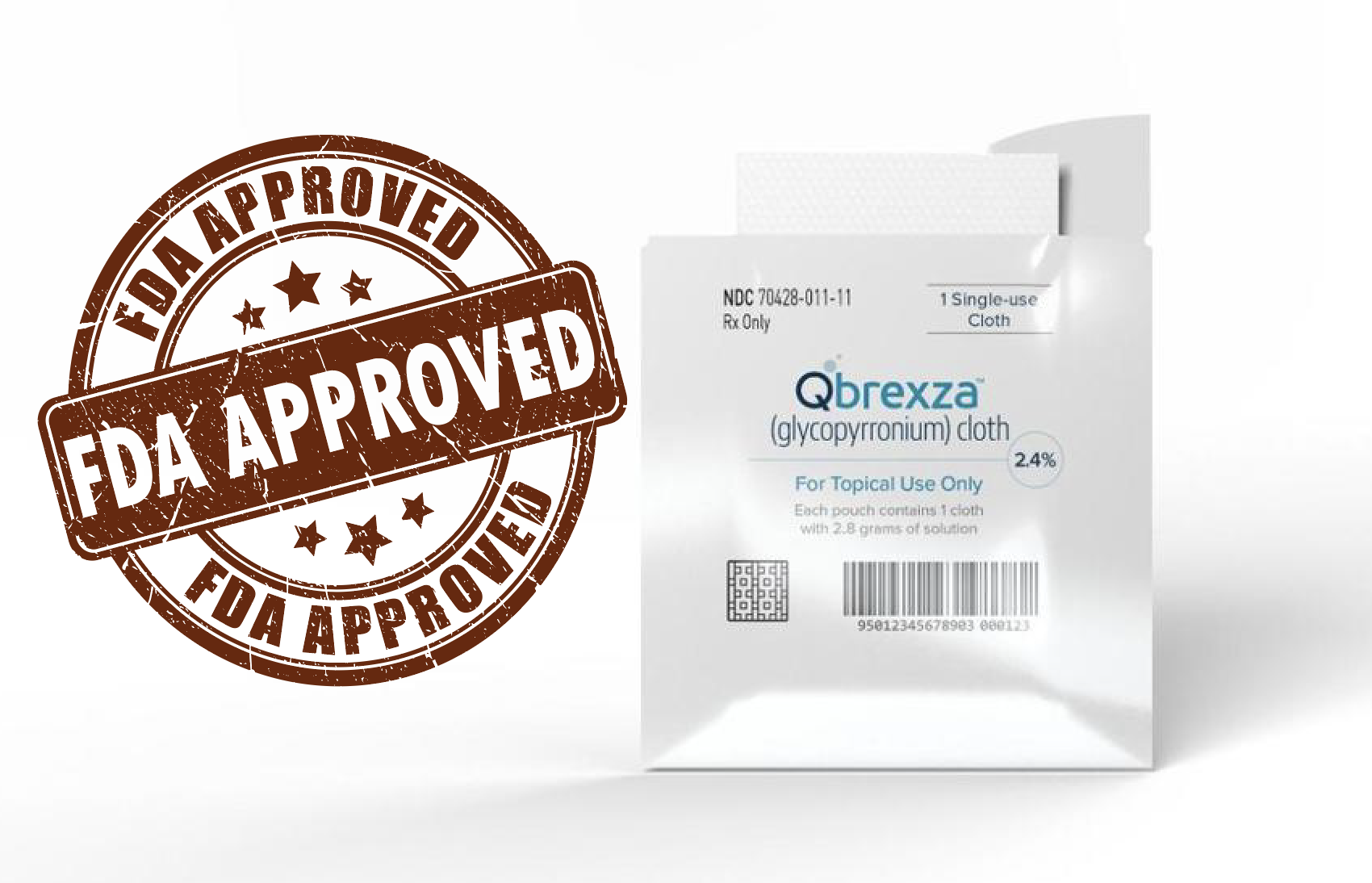


Three International Hyperhidrosis Society co-founders and board members have been working with fellow research scientists and pharmaceutical innovators at the biopharmaceutical company Dermira, Inc. for years to develop a new topical treatment for underarm excessive sweating (axillary hyperhidrosis).
Today we congratulate and thank Menlo Park-based Dermira and Dr. Dee Anna Glaser (St. Louis School of Medicine), Dr. Adelaide Hebert (University of Texas Medical School at Houston), and Dr. David Pariser (Eastern Virginia Medical School and Pariser Dermatology Associates) for the successful FDA-approval of Qbrexza™ cloths for axillary hyperhidrosis.
Finally, since Botox® was FDA-approved for underarm excessive sweating in 2004 and the miraDry® medical device was FDA-cleared in 2011, there is a new treatment option available in this category.
“There are many reasons to be excited about the addition of this new non-invasive treatment option for hyperhidrosis,” says Dr. David Pariser, IHhS co-founder, Eastern Virginia Medical School professor, and senior physician at Pariser Dermatology Specialists. “In studies, we found it to be effective and well-tolerated, even in children as young as 9 years old. Hyperhidrosis can have serious impacts on children’s well-being as well as success at school, but there have been few rigorously-studied and FDA-approved options available to help them. It’s gratifying to see that starting to change.”~David M. Pariser, MD, FACP, FAAD
Qbrexza (pronounced kew brex' zah) comes in individually packaged cloths (or wipes) that are to be used at home once per day to reduce underarm sweating. One wipe is intended for two underarms. The treatment works by blocking receptors responsible for sweat gland activation. It is scheduled to become available starting October 2018.
The active ingredient in Qbrexza is glycopyrronium tosylate, an anticholinergic formulation. As you may know, some hyperhidrosis sufferers already take oral anticholinergics to help control their sweating but can experience side effects such as: dry mouth, muscle cramps, and urinary retention. In theory, by applying the medication to the top of the skin instead of taking it by mouth, there may be a reduced incidence of such side effects. Also, there have been concerns over the years about older patients taking anticholinergics for long periods of time and increased risks of dementia – these concerns may, again, be reduced with Qbrexza because this is a medicine delivered through the skin to the affected area and not taken by mouth. One dermatologist agrees saying, “Yes, the topical agent lessens the risk of dementia in older adults.” Discuss it with your healthcare provider and find out what he or she thinks.
In research studies with Qbrexza, the most common side effects were:
Qbrexza was shown in clinical trials to improve sweating symptoms as soon as 1 week after starting the regimen. Studies also found that patients using Qbrexza wipes once daily for four weeks improved their “sweating severity” by nearly 25% to 30% (compared to 4% to 5% with placebo) and that measured sweat volume was reduced by 50% or more (in most patients.) The wipes were "well-tolerated" and any reported side effects were primarily mild to moderate (see above).
Of special note, Qbrexza is FDA-approved for patients who are 9 years old or older. We have long discussed in this blog how there are few approved treatments for children and teens with hyperhidrosis. As Qbrexza is a non-invasive, at-home option that is actually approved for kids, it may lead to meaningful, practical relief in this under-served group.
Dr. Dee Anna Glaser, Dermatology Professor and Interim Chair at the St. Louis School of Medicine and IHhS co-founder, says “This is a great addition to the treatments that we have for hyperhidrosis, and based on my work in the clinical trials and feedback from study subjects, I am excited to offer this option to my patients. Moving forward, I hope there will be future investigation on the use of this therapy in nonaxillary hyperhidrosis, as well.”
“There are many reasons to be excited about the addition of this new non-invasive treatment option for hyperhidrosis,” says Dr. David Pariser, IHhS co-founder, Eastern Virginia Medical School professor, and senior physician at Pariser Dermatology Specialists. “In studies, we found it to be effective and well-tolerated, even in children as young as 9 years old. Hyperhidrosis can have serious impacts on children’s well-being as well as success at school, but there have been few rigorously-studied and FDA-approved options available to help them. It’s gratifying to see that starting to change.”
Some questions, however, still remain:
Talk to your healthcare provider about whether Qbrexza might be a good choice for you, or not. Be sure to mention any other medications you are using including over-the-counter products. To learn more, review all the Qbrexza studies just posted in our published literature website section (look for glycopyrronium tosylate in the title) and watch this blog for updates as we try to get answers to the questions that remain.
Healthcare providers eager to learn more can attend our upcoming Hyperhidrosis Master Class in Washington, DC. IHhS board members Dr. Glaser, Dr. Hebert, Dr. Pariser and others will be discussing their research and best practices in hyperhidrosis care. Watch for the invitation and registration information on SweatHelp.org.
Latest Blogs